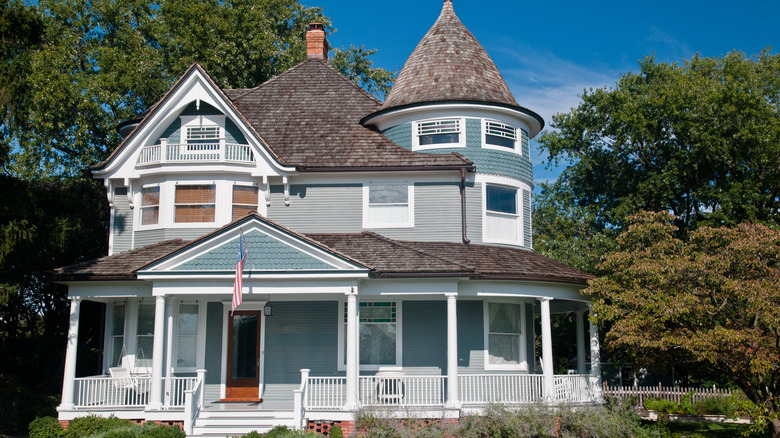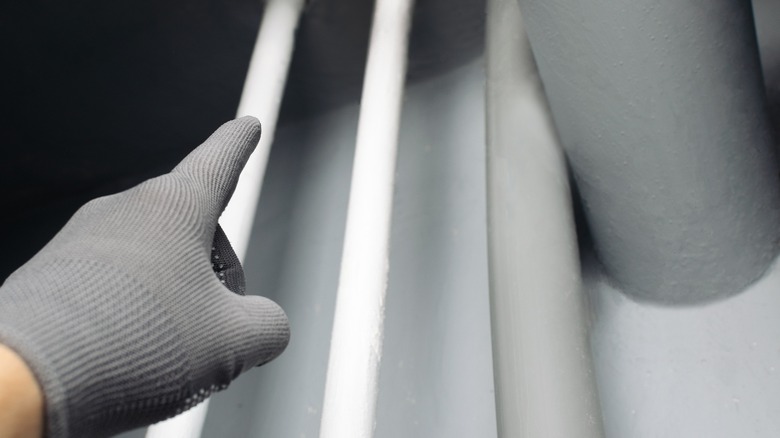The Feature In Older Homes That Could Cause Serious Plumbing Issues
Many people love historic houses, and for good reason — they often have unique architectural details, charming features, and a quirkiness that's often absent in newer homes. These houses also often have a lot of potential for remodels or upgrades that still preserve the original look of the building. Older homes are also popular because they can be cheaper and offer a path to homeownership for people who might not be able to afford a home otherwise. However, the historic charm and affordable cost of some older houses could be hiding serious plumbing problems, including the presence of polybutylene piping.
If you are considering buying an older home or you already live in one, you need to be aware of this feature that could cause critical plumbing issues in the future. Polybutylene piping is associated with high failure rates and can cause major damage in some circumstances. It's important to know what these pipes are, how to tell if your home has them, and what to do if you discover these pipes in your house.
What are polybutylene pipes?
Polybutylene pipes are a type of plastic plumbing piping that was widely used in many homes in the United States and Canada from the late '70s to around 1995. At the time, these pipes were very popular, as they offered several advantages over copper pipes. These included that they were cheap and easy to install. The problem with polyethylene pipes is that they have a tendency to prematurely fail, resulting in serious issues. These pipes can fail when chemicals, such as fluoride and chlorine that are commonly found in city water supplies, interact with the polybutylene, causing the material to become brittle and break down. When this happens, it can cause the pipes to break or leak, resulting in water damage or flooding. Other problems such as exposure to UV light, thawing and unthawing repeatedly, and twisting during installation can all cause these pipes to deteriorate faster as well.
The risk of property damage is so great that some insurers won't cover homeowners who have polyethylene pipes. Due to the issues with this type of plumbing, several manufacturers of the material, including Shell Oil Company, were sued in 1995. The homeowners won a $950 million class action settlement against the chemical companies for damages to their properties resulting from these faulty pipes. As a result, polybutylene pipes are no longer used in homes.
How to know if you have polybutylene pipes and what to do
So, how do you know if you have polybutylene pipes in your home? If your house was built before 2000, there is a good chance that your home has these pipes. Polybutylene piping is often located near sinks, toilets, and water heaters. It's used for water supply but not used for drain, vent, or waste piping. This type of pipe is flexible, unlike copper and other pipes that are rigid. It is usually ½ to 1 inch in diameter and is most commonly colored grey. However, it can also be blue, white, black, or silver. You might also notice the code "PB2110" stamped on the pipes somewhere. If you are unsure if your home has polybutylene piping, it's best to contact a local plumbing company.
Polybutylene pipes deteriorate from the inside out, so you can't tell when they will break. The average lifespan for polybutylene pipes is 10 to 15 years. They also can't be effectively repaired once they start breaking down. Therefore, if your home has these pipes, it's time to replace your plumbing, and this can cost several thousand dollars. So, if you are going to buy or you already own an older home, this is something that you'll want to budget for.

